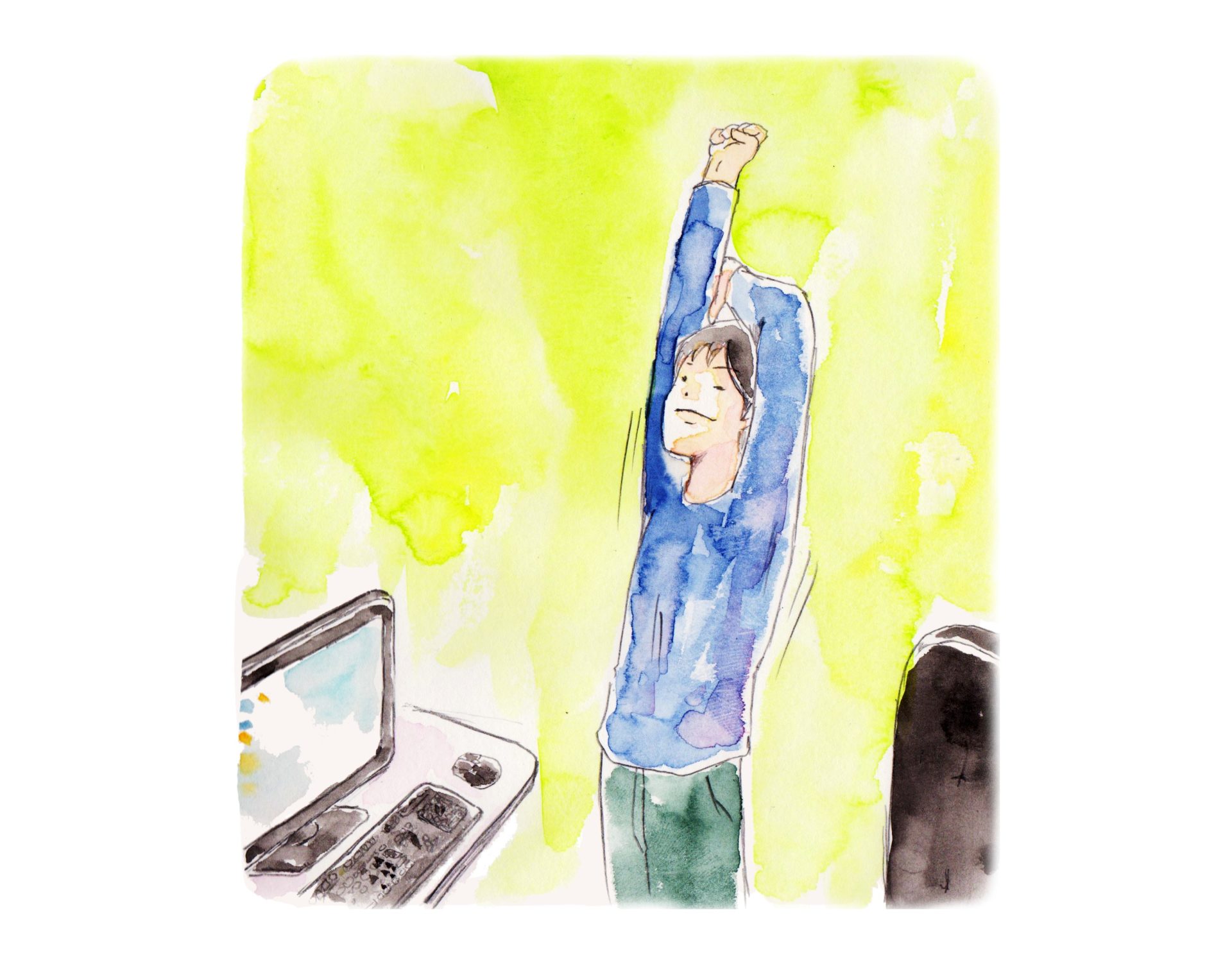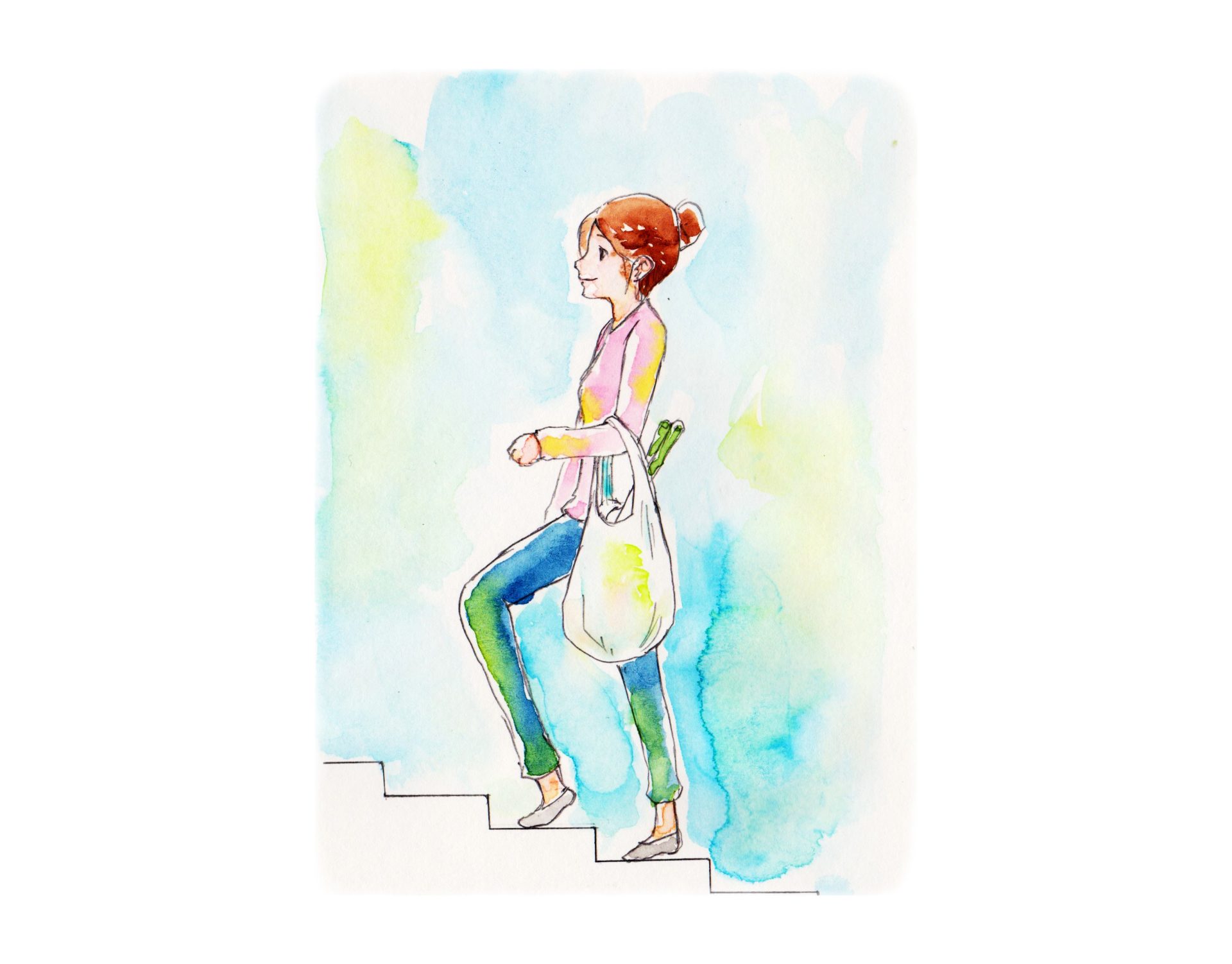On this page, we have shown light activities that are easy to do, even if you do not usually have the habit of physical activity.
Even casual activities, if you do them intentionally, can lead to more active days.
Stand up once every half hour

First, let’s focus on your sitting position. At home, we tend to do a lot of sedentary activities such as watching TV using a smartphone, working, and playing games. If possible, get up from your sitting position and move your body for about 3 minutes every 30 minutes, or at least 5 minutes every hour.
Ventilate regularly
Ventilation also helps prevent you from sitting too much and is effective for circulating the air in the house and avoiding the stagnation of the virus. When you do physical activity in the house, open a window for a few minutes every half hour or so. If there is more than one window, it is more effective to open a window in two directions, creating a cross breeze. If you only have a window on one side, open the door to let the wind through.
Take advantage of the housework

As described in the introductory section, physical activity includes lots of activities in our daily lives. You can do light physical activity every day, such as cleaning every corner or walking with the weight of a shopping bag.
If you live on the second floor or above, you can use the stairs instead of the elevator. Some of you may live on very high floors and cannot climb all the stairs. However, even in such cases, try using the stairs partially as far as possible.
Do stretching
If you are not good at a moderate-to-vigorous physical activity such as aerobic exercise and strength training, we recommend you start with stretching. Stretching enables you to feel more relaxed and refreshed. Especially if you work at home, it’s a good idea to take breaks to stretch. “Kokoro no Mimi,” by the Ministry of Health, Labor and Welfare, introduces stretching to help workers who suffer from neck pain and back pain, this may also be a helpful tool.
Take a walk
Even if you are in the house, in a small space, walking maintains a level of physical activity. Make a conscious effort to walk, just for a moment, such as going to the bathroom, making a phone call, rehydrating, or ventilating.
If you can go outdoors, we recommend you take a walk around your home, taking care of the spread of COVID-19 and your proximity to other people. At first, it is okay to go slow so that you do not breathe hard. When you get used to walking, faster walking will be more effective.
Reflections
Even if you spend a lot of time at home, you can increase your physical activity by standing up, ventilating, doing housework, stretching, and walking.
Please try to incorporate it into your daily life.
Refer to ” Let’s find a physical activity that suits you – for advanced learners” if you feel like you can increase the levels of activity more.
<Reference>
The content of this article is based on the information provided below.
Japan Society for Exercise and Epidemiology press release. The Japan Society for Exercise and Epidemiology recommends physical activity with sufficient distance between people in and around the house in order to prevent health hazards caused by insufficient physical activity and too much sitting as a result of the request to refrain from going outside as a countermeasure against the new coronavirus infection.
https://www.zaikei.co.jp/releases/989057/.
・WHO. Be Active during COVID-19.
https://www.who.int/news-room/q-a-detail/be-active-during-covid-19.
WHO/Europe. How to stay physically active during COVID-19 self-quarantine.
http://www.euro.who.int/en/health-topics/health-emergencies/coronavirus-covid-19/novel-coronavirus-2019-ncov-technical-guidance/stay-physically-active-during-self-quarantine
Ministry of Health, Labor and Welfare. Kokoro no ears: Tokyo Stretch Story.
https://kokoro.mhlw.go.jp/ps/tokyo_stretch.html.



